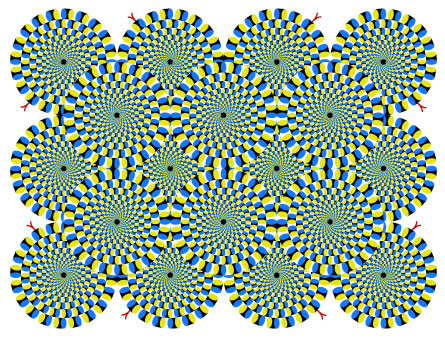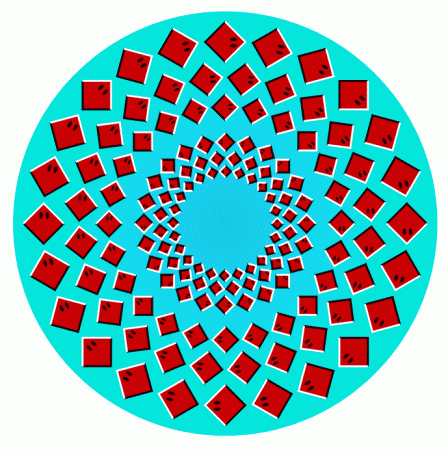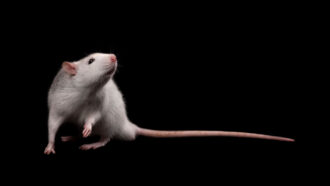Seeing swirling snakes
Brain scientists watch the eyes of people watching an optical illusion

You’ve got eye quivers, and you can’t help it.
While staring at something, it may seem like your eyes remain motionless. But that may not be the case. Researchers have found that eyes quiver with tiny, involuntary movements called microsaccades (pronounced my-crow-SA-kadeez). In a recent study, scientists found that these jitters — together with blinking — may help explain the trick behind a popular optical illusion.
The illusion is pictured above. Stare at it for a few seconds and see what happens. The circles may seem to turn and wriggle like snakes wrapped tightly in coils. But they’re not really slithering anywhere: The drawing is designed to trick your eyes into seeing motion that’s not there.
To understand the trick, vision neuroscientists at the Barrow Neurological Institute in Phoenix studied the eye movements of eight volunteers. Neuroscientists study the brain and the nervous system of the body; vision neuroscientists study how the eyes and seeing affect mental processes. In this experiment, the researchers wanted to connect a person’s eye movements to his or her experience of seeing movement in the illusion.
Volunteers pushed a button when they thought they saw the snakes move and released the button when the snakes appeared to stop swirling. The scientists observed that volunteers blinked more and their eyes had short, sharp movements — those microsaccades — just before they saw the snakes move. When the micro eye quivers slowed down, the illusion disappeared.

Optical illusions are more than just visual gags. They’re important because they show that what you see isn’t always reality. Neuroscientists study optical illusions to understand how what we see, known as perception, changes the way we think, or cognition. Microsaccades have recently become a popular subject to study because they’re involuntary, which means you can’t deliberately force them, and they’re involved in the act of staring — even at illusions. (Scientists have found that other animals, including monkeys, have microsaccades, too — which means they may also see the illusions!)
Scientists suspect these movements have something to do with different brain functions, including paying attention. That means microsaccades might also be important in the study of diseases that affect vision or thinking.
Power Words
involuntary Done without conscious, or known, control.
neuroscience The study of the brain and nervous system.
microsaccades Involuntary movements of the eye that occur during visual fixation.







